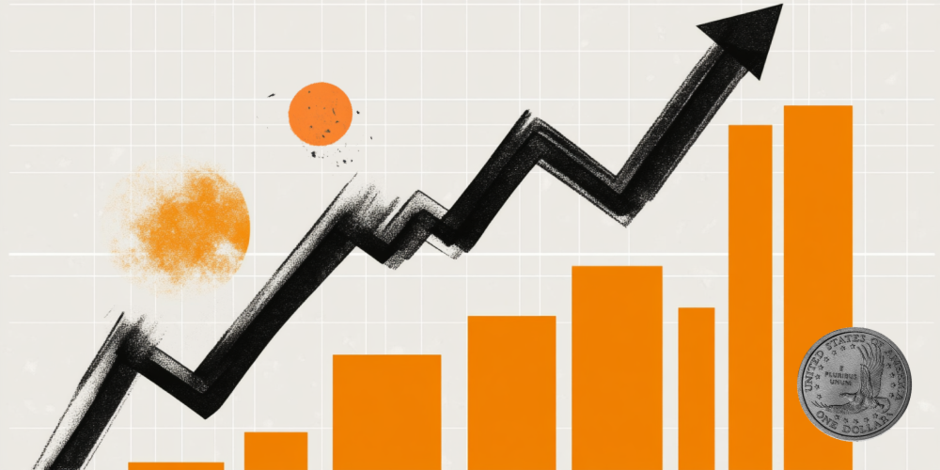Created
: 2025.10.07














![]() 2025.10.07 16:23
2025.10.07 16:23
The US Dollar has shrugged off concerns about the US government shutdown and expectations of Federal Reserve monetary policy easing, to appreciate for the second consecutive day. The DXY is trading at 98.30 at the time of writing, coming closer to the last six weeks' top, in the area of 98.60.
The US Dollar Index, which measures the value of the USD against a basket of six major currencies, has retraced most of the losses from the previous week, when a standoff between Democrats and Republicans led to the closure of the US Government. Political and fiscal uncertainty in France and Japan has hammered the Euro and the Yen, prompting speculative investors to seek safety in the US Dollar.ç
In Japan, Sanae Takaichi, a former assistant of the PM Shinzo Abe, has won the elections in the LDP party and is highly likely to be nominated as the next Prime Minister. Investors are awaiting the names of her cabinet, but there is a feeling that she will try to bring "Abenomics" back, a policy of big fiscal spending and a loose monetary policy, which has dampened expectations of further BoJ tightening.
In Europe, the shock resignation of the French Prime Minister Sébastien Lecornu after only 27 days in charge plunged France into a political crisis, boosting concerns about its delicate fiscal health and sending the Euro tumbling across the board.
In the absence of US data, the speeches from Fed officials are providing the fundamental guidance for the US Dollar, and today, there are plenty of them scheduled. Michelle Bowman and Raphael Bostic are on the hawkish side, and Stephen Miran, at the dovish end of the committee, will be taking the stage later on the day.
The US Dollar (USD) is the official currency of the United States of America, and the 'de facto' currency of a significant number of other countries where it is found in circulation alongside local notes. It is the most heavily traded currency in the world, accounting for over 88% of all global foreign exchange turnover, or an average of $6.6 trillion in transactions per day, according to data from 2022. Following the second world war, the USD took over from the British Pound as the world's reserve currency. For most of its history, the US Dollar was backed by Gold, until the Bretton Woods Agreement in 1971 when the Gold Standard went away.
The most important single factor impacting on the value of the US Dollar is monetary policy, which is shaped by the Federal Reserve (Fed). The Fed has two mandates: to achieve price stability (control inflation) and foster full employment. Its primary tool to achieve these two goals is by adjusting interest rates. When prices are rising too quickly and inflation is above the Fed's 2% target, the Fed will raise rates, which helps the USD value. When inflation falls below 2% or the Unemployment Rate is too high, the Fed may lower interest rates, which weighs on the Greenback.
In extreme situations, the Federal Reserve can also print more Dollars and enact quantitative easing (QE). QE is the process by which the Fed substantially increases the flow of credit in a stuck financial system. It is a non-standard policy measure used when credit has dried up because banks will not lend to each other (out of the fear of counterparty default). It is a last resort when simply lowering interest rates is unlikely to achieve the necessary result. It was the Fed's weapon of choice to combat the credit crunch that occurred during the Great Financial Crisis in 2008. It involves the Fed printing more Dollars and using them to buy US government bonds predominantly from financial institutions. QE usually leads to a weaker US Dollar.
Quantitative tightening (QT) is the reverse process whereby the Federal Reserve stops buying bonds from financial institutions and does not reinvest the principal from the bonds it holds maturing in new purchases. It is usually positive for the US Dollar.
![]()
Created
: 2025.10.07
![]()
Last updated
: 2025.10.07

FXStreet is a forex information website, delivering market analysis and news articles 24/7.
It features a number of articles contributed by well-known analysts, in addition to the ones by its editorial team.
Founded in 2000 by Francesc Riverola, a Spanish economist, it has grown to become a world-renowned information website.
We hope you find this article useful. Any comments or suggestions will be greatly appreciated.
We are also looking for writers with extensive experience in forex and crypto to join us.
please contact us at [email protected].
Disclaimer:
All information and content provided on this website is provided for informational purposes only and is not intended to solicit any investment. Although all efforts are made in order to ensure that the information is correct, no guarantee is provided for the accuracy of any content on this website. Any decision made shall be the responsibility of the investor and Myforex does not take any responsibility whatsoever regarding the use of any information provided herein.
The content provided on this website belongs to Myforex and, where stated, the relevant licensors. All rights are reserved by Myforex and the relevant licensors, and no content of this website, whether in full or in part, shall be copied or displayed elsewhere without the explicit written permission of the relevant copyright holder. If you wish to use any part of the content provided on this website, please ensure that you contact Myforex.
Myforex uses cookies to improve the convenience and functionality of this website. This website may include cookies not only by us but also by third parties (advertisers, log analysts, etc.) for the purpose of tracking the activities of users. Cookie policy